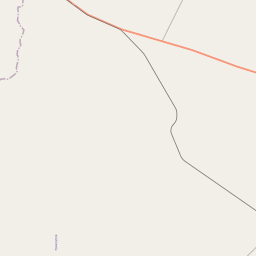Texas Sheep and Goat Raisers' Association
Historical marker location:






The Edwards Plateau area of southwest Texas has long been associated with the sheep and goat industries of the state. Both sheep and goats were significant elements of the local economy, having been introduced to Texas by Spanish explorers and late-19th-century colonists. In 1869, rancher Phillip Palmer brought the first sheep to the Fort Clark area, and his operation grew to a flock of nearly 9,000 sheep. Within a few years, Charles Dissler began Val Verde County's goat industry, bringing his animals with him from Kimble County.
In 1915, ranchers met in Del Rio to organize the Texas Sheep and Goat Raisers' Association to bring a halt to a wave of stock thefts. The organizational meeting, held at the Princess Theater on this city block, was called by five prominent ranchmen: J.B. Murrah, Johnson Robinson, E.E. Sticklen, V.A. Brown and B.M. Halbert. Sixty stockmen attended, and 30 signed the charter, originally naming the group the Sheep and Goat Raiser's Association of Texas. Members chose Murrah, of Del Rio, as the group's first president, and Julian Lacross, also of Del Rio, as secretary-treasurer.
The headquarters moved to San Angelo in the 1930s, and a split within the association resulted in the creation of the rival Texas Wool and Mohair Growers Association. The two groups merged in 1935 as the Texas Sheep and Goat Raisers' Association, with a statewide agenda that included advocacy, research and promotion.
Today, the association is an important trade organization and political force. Although the association had its beginning in Del Rio, the headquarters is in San Angelo, which is now more central to Texas' sheep and goat industries. (2005)
As one of the most visible programs of the Texas Historical Commission (THC), historical markers commemorate diverse topics in Texas history, including: the history and architecture of houses, commercial and public buildings, religious congregations, and military sites; events that changed the course of local and state history; and individuals who have made lasting contributions to the state, community organizations, and businesses.
Texas was once a part of Mexico but gained independence in 1836 after a famous battle at the Alamo.
In the early 19th century, Val Verde County became a part of Texas after the Mexican War of Independence. The region saw conflict during the Texas Revolution, with the infamous Battle of Val Verde taking place near the county's namesake river in 1862. The battle, part of the American Civil War, resulted in a Confederate victory.
During the late 19th and early 20th centuries, Val Verde County experienced significant economic growth. The arrival of the railroad in the 1880s stimulated agriculture and ranching industries. The county also became a hub for mining, particularly silver, lead, and zinc. The city of Del Rio, the county seat, emerged as an important trading center and transportation hub.
Val Verde County continued to evolve throughout the 20th century. The construction of Amistad Dam in the 1960s brought about the formation of Lake Amistad, which became a popular recreational area. The county's economy shifted to include tourism and outdoor activities, drawing visitors to its natural beauty and historical sites.
Today, Val Verde County remains an important part of Texas history and a vibrant community. Its rich past is celebrated through museums and heritage sites, while the region's diverse cultural and natural resources contribute to its appeal as a tourist destination.
Val Verde County Timeline
This timeline provides a glimpse into the major events and milestones that have shaped the history of Val Verde County, Texas.
- 1885 - Val Verde County is officially established.
- 1800s - Indigenous people, including Comanche and Lipan Apache tribes, inhabit the area.
- 1880 - Southern Pacific Railroad extends through Val Verde County.
- 1882 - City of Del Rio is founded as the county seat.
- 1912 - Devil's River State Recreational Area is established.
- 1942-1946 - Laughlin Army Air Field (now Laughlin Air Force Base) is constructed and operated during World War II.
- 1952 - Amistad Dam is completed, creating Amistad Reservoir.
- 1980 - Seminole Canyon State Historical Park and the nearby Fate Bell Shelter are dedicated.
- 1998 - Val Verde Winery, Texas' oldest continuously operated winery, celebrates its 125th anniversary.